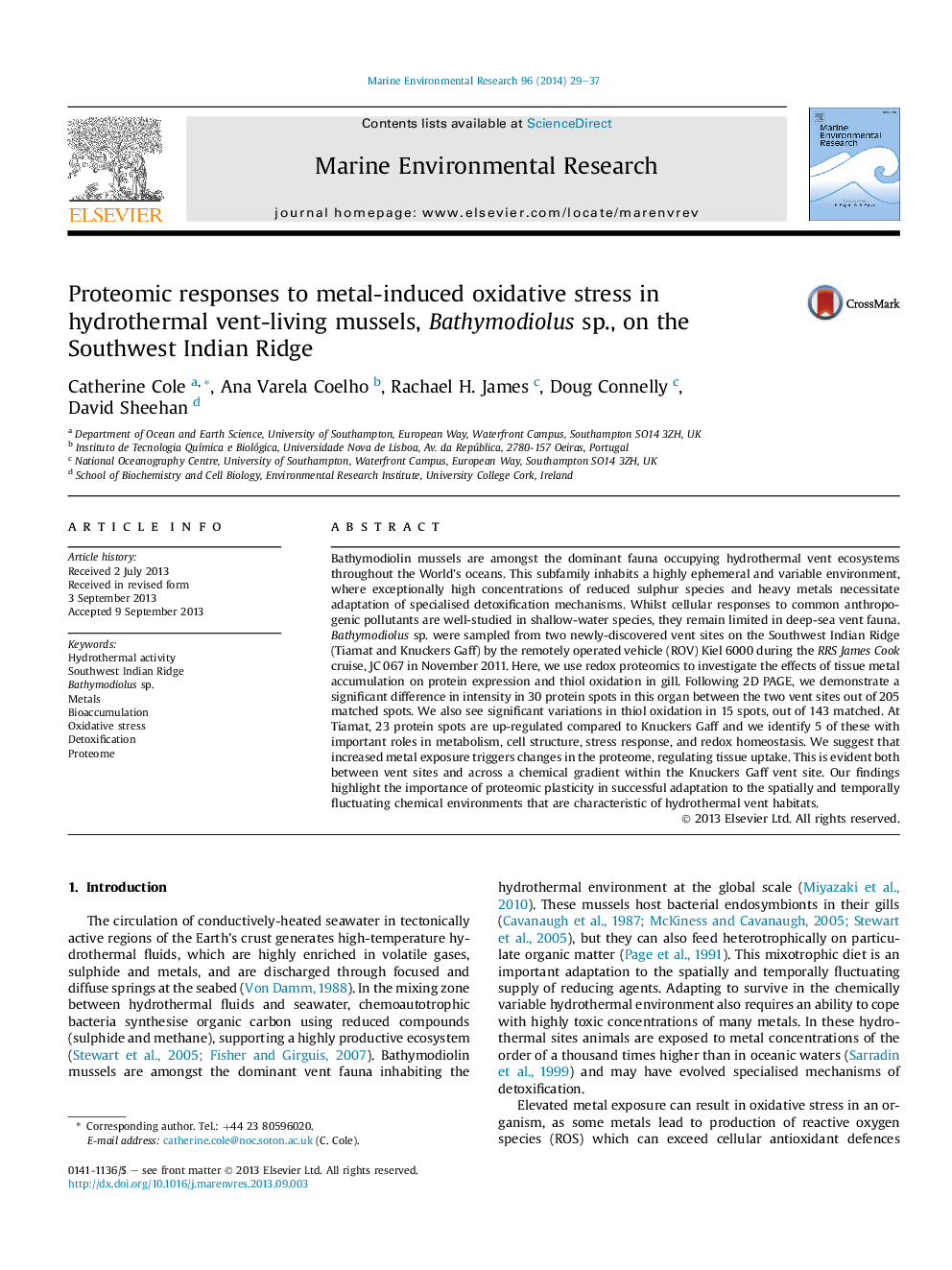| Article ID | Journal | Published Year | Pages | File Type |
|---|---|---|---|---|
| 4550813 | Marine Environmental Research | 2014 | 9 Pages |
•Environmental stressors are high and varied in hydrothermal vent habitats.•Bathymodiolus sp. accumulate high metal concentrations in tissues.•First redox proteomics study to evaluate stress responses in SW Indian Ridge vent mussels.•Protein expression levels and thiol oxidation status vary between sites.•Proteomic plasticity is important for survival.
Bathymodiolin mussels are amongst the dominant fauna occupying hydrothermal vent ecosystems throughout the World's oceans. This subfamily inhabits a highly ephemeral and variable environment, where exceptionally high concentrations of reduced sulphur species and heavy metals necessitate adaptation of specialised detoxification mechanisms. Whilst cellular responses to common anthropogenic pollutants are well-studied in shallow-water species, they remain limited in deep-sea vent fauna. Bathymodiolus sp. were sampled from two newly-discovered vent sites on the Southwest Indian Ridge (Tiamat and Knuckers Gaff) by the remotely operated vehicle (ROV) Kiel 6000 during the RRS James Cook cruise, JC 067 in November 2011. Here, we use redox proteomics to investigate the effects of tissue metal accumulation on protein expression and thiol oxidation in gill. Following 2D PAGE, we demonstrate a significant difference in intensity in 30 protein spots in this organ between the two vent sites out of 205 matched spots. We also see significant variations in thiol oxidation in 15 spots, out of 143 matched. At Tiamat, 23 protein spots are up-regulated compared to Knuckers Gaff and we identify 5 of these with important roles in metabolism, cell structure, stress response, and redox homeostasis. We suggest that increased metal exposure triggers changes in the proteome, regulating tissue uptake. This is evident both between vent sites and across a chemical gradient within the Knuckers Gaff vent site. Our findings highlight the importance of proteomic plasticity in successful adaptation to the spatially and temporally fluctuating chemical environments that are characteristic of hydrothermal vent habitats.
